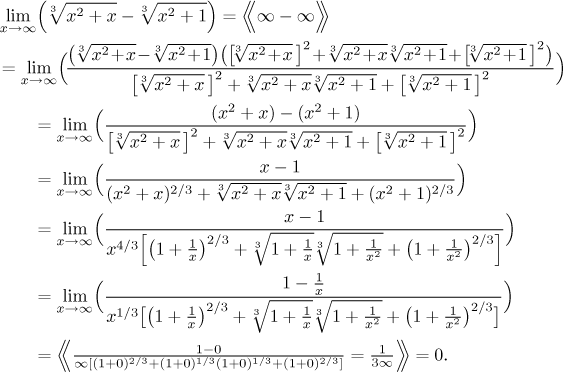It often happens that we have a difference of two expressions that we would love to cancel and they would even cancel nicely, but they are hidden under roots so they cannot be put together.
Example:
![]()
Here we can imagine that 2 is actually a square root of 4. How do we get rid of these roots?
Solution: Multiply and divide this difference by the same expression, but with plus, and use the formula
In the above example we would write

The second "zero over zero" situation was done by cancelling, since here it was natural and way easier than l'Hospital's rule.
Similarly we can use algebraic identities to get rid of other roots. For instance, the identity
(A − B)⋅(A2 + AB + B2) = A3 − B3
allows us to get rid of cubic roots.
Example:

This trick is very often used for expressions with powers and similar terms investigated at infinity (see Intuitive evaluation in Theory - Limits). Then this removal of roots is helpful if the roots are of the same type. Note that this second example was like this: Both roots were of the type x2/3. If the type is different, then it is better to use factoring out of the dominant term, see the box "polynomials, sums and ratios with powers at infinity".
In Solved Problems - Limits, these methods are used in this problem.